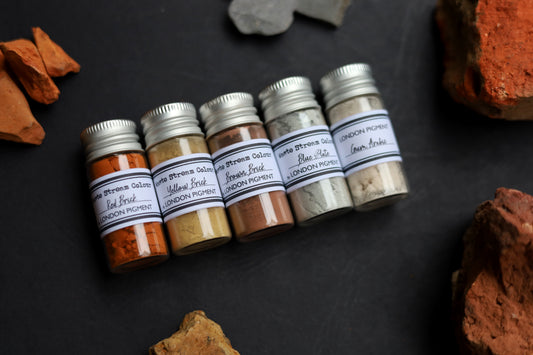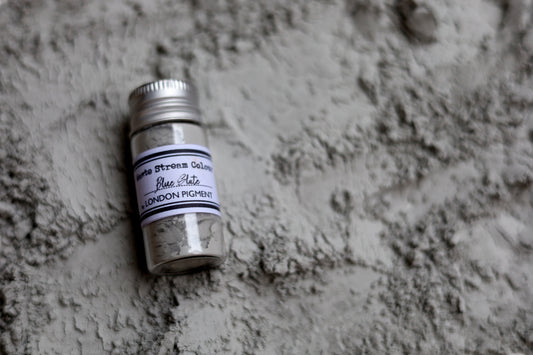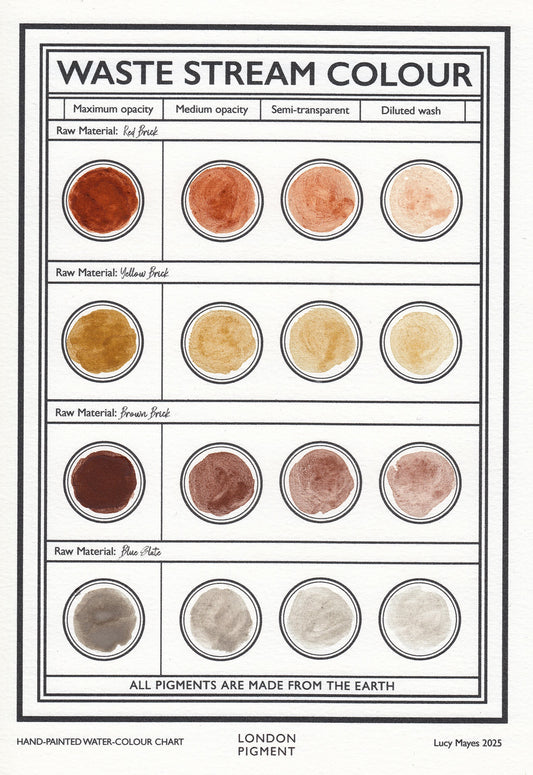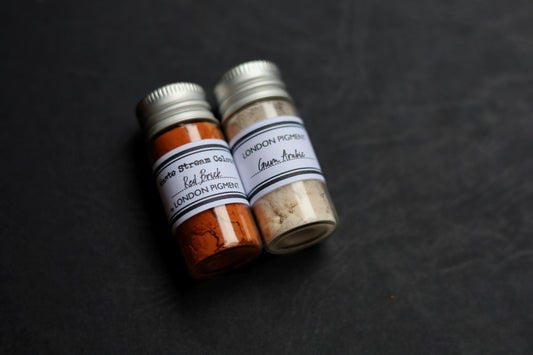FAQ
Colorants: what are pigments and dyes?
Dyes and pigments are two types of compounds which can impart a color to a material. Pigments are insoluble finely ground particulates. Dyes are soluble particles and their molecules are very small whereas pigments are much larger. Dyes easily dissolve in water and many solvents while pigments do not dissolve in water. Pigments need a binder or adhesive to glue down the particles. Any paint or ink* can be made with pigments but it is the binder that changes, for example cold pressed linseed oil is used as the binder for oil paints and gum Arabic is the binder for watercolour and some inks. Dyes also require a binder to adhere to a matetrials surface but sometimes a dye might chemically attach itself to a substrate on a molecular level. These are general rules, so it does depend on the particular material or dye used, as dyes often require a mordant to help it bind.
*there are of course some pigments that react differently to the various binders that are used
Will products from London Pigment fade over time?
Yes & No
Dyes are more vulnerable to fading or bleaching caused by ultraviolet light from the sun light, electrical light, and heat. Pigments resist this fading process and are more stable. UV rays in sunlight can break the electronic bonds of a dye molecule and therefore destroy its colour, causing it to lighten. This process is described as being fugitive, when a colour’s chemical makeup is liable to change over time.
Any ink made from a plant dye will fade over time, however Oak gall ink is an exception and actually darkens over time if made well with the right ratios between the ingredients. Pigments derived from the earth and carbon black pigments will not fade. Pigments made from plant dyes, also known as ‘lake pigments’ are less liable to fade than the dyes they are made from but can also fade if subjected to strong sunlight over extended periods of time.
Please look at the products individual listing for lightfastness ratings.
Are London Pigment inks and pigments natural or organic?
Yes & No…
The answer to this question depends on the definition of ‘natural’ and ‘organic’. The inks are derived from ‘organic’ material, i.e plants, but they are not organically certified as they are collected from the local environment in London and further afield in Britain. Using the word ‘organic’ in reference to pigments means something very specific, it refers to whether the material is made from once living creatures and contains carbon molecules. This is within the study of organic chemistry as opposed to inorganic chemistry. For example the carbon blacks we use in the ‘carbon black ink’ is made from burnt wood and therefore considered organic. Chalk which is to be found in the ‘Rotherhithe Orange’ pigment is a form of calcium carbonate. It is composed of the shells of minute marine organisms such as foraminifera, coccoliths, and rhabdoliths. So at one point in its life cycle chalk was once living.
Are London Pigments environmentally sustainable?
Yes
Environmental sustainability is the responsibility to conserve natural resources and protect global ecosystems to support health and wellbeing, now and in the future.
London Pigments are made from either recycled materials or from sustainably grown plants that are harvested in small amounts or regrown annually. Raw plant materials are either grown by myself, collected from wastelands or bought from sustainable retailers.
Do inks and pigments made by London Pigment vary?
Yes
The products on sale are limited edition, have limited availability and do vary from season to season and with each batch. This is because raw materials for pigments come from different sources. Materials such as red brick, roof slate, chalk and earth come from waste stream materials from the construction industry and so can vary in their composition. Inks and pigments derived from plant material also can vary in their colour due to seasonal changes and can affect the strength of the dyestuffs in the plants.
Waste Stream Colour Products
-
Waste Stream Watercolour Complete Set
Regular price From £70.00 GBPRegular priceUnit price per -
Blue Slate Pigment
Regular price £15.00 GBPRegular priceUnit price per -
Waste Stream Colour Chart
Regular price £15.00 GBPRegular priceUnit price per -
Waste Stream Watercolour Duo Set
Regular price £30.00 GBPRegular priceUnit price per



